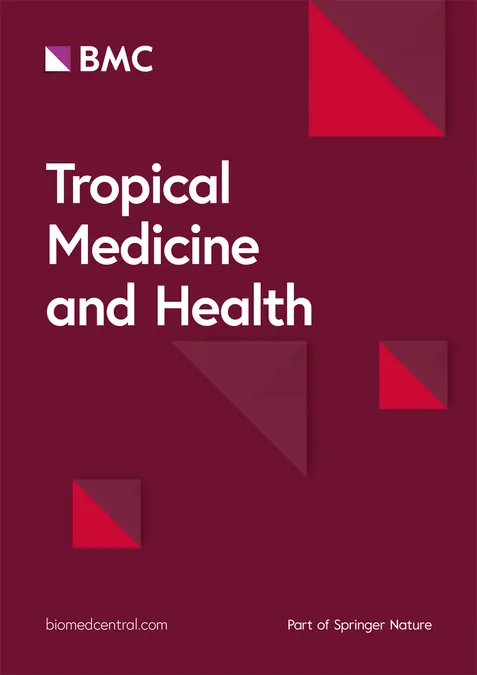
Understanding the Resurgence of Mpox: Key Drivers and Recent Outbreaks in Africa
2025-04-03
Author: Mei
Introduction
Mpox, previously known as monkeypox, is a viral zoonotic disease that shares symptoms with smallpox, caused by the mpox virus, which is an enveloped double-stranded DNA virus belonging to the Poxviridae family. This virus has two clades: Clade 1, noted for its higher virulence and case-fatality rates, primarily found in Central Africa, and Clade 2, which is generally less severe and seen in West Africa.
Transmission and Symptoms
The primary transmission of mpox occurs through contact with infected animals or humans, usually via bites, scratches, direct contact with bodily fluids, or respiratory droplets in close quarters. Notably, recent evidence has highlighted sexual contact as a significant mode of transmission, especially among men who have sex with men (MSM). The symptoms of mpox include fever, headache, myalgia, and distinctive rashes, often leading to severe complications such as secondary infections or even blindness in extreme cases.
Treatment and Vaccination
Treatment is currently supportive, focusing on symptom relief as there are no definitive antiviral treatments available, although tecovirimat has been authorized for emergency use in certain countries. Vaccines like JYNNEOS are recommended for high-risk individuals, especially during outbreaks, and can also be utilized post-exposure.
Historical Context
The mpox virus was first identified in the late 1950s in monkeys in Denmark, with the first recorded human case in the Democratic Republic of the Congo (DRC) in 1970. The disease was once largely confined to rural settings but has since become endemic in Western and Central Africa. Spanning over the years, sporadic outbreaks have spurred emergency responses, particularly when the World Health Organization (WHO) declared a Public Health Emergency of International Concern (PHEIC) due to a significant rise in cases.
Recent Resurgence
In recent times, there has been a notable resurgence of mpox, causing concern among public health officials. The DRC, for instance, reported over 18,000 suspected cases and nearly 1,000 deaths in early 2024, primarily affecting urban areas with substantial population density. The current outbreak's unique dynamics, particularly how it is now associated with sexual transmission and urban migration patterns, indicate that the epidemiology of mpox is rapidly evolving.
Key Drivers of the Resurgence
Several factors contribute to the resurgence of mpox in Africa:
Waning Immunity
The cessation of the smallpox vaccination in 1980 has left a significant portion of the population vulnerable. This lapse in immunity has allowed mpox, closely related to the smallpox virus, to thrive.
Socioeconomic Factors
High rates of poverty, conflict-induced migration, and risky occupational behaviors (e.g., artisanal mining) increase human-animal interactions, heightening the chance for zoonotic spillovers.
Urbanization
Rapid urban migration has resulted in crowded living conditions, facilitating person-to-person transmission, particularly noted in large cities such as Kinshasa.
Changes in Sexual Behavior
Notably, recent outbreaks are linked to sexual contact in MSM networks, marking a shift from earlier transmission dynamics.
Public Health Infrastructure
Many African nations lack adequate laboratory facilities, healthcare staff, and rapid response capabilities necessary for disease surveillance and management. Such deficiencies have hampered effective outbreaks’ response efforts.
Recent Trends and Implications
The recent mpox outbreak in Africa underscores the urgent need for enhanced disease surveillance, public awareness campaigns, and improved healthcare responses. Health authorities across various nations are emphasizing the importance of vaccination, especially targeted at high-risk individuals and those in close contact with animal reservoirs. Additionally, the integration of health education could empower communities to take preventive measures and reduce stigma associated with the disease.
Conclusion
Despite significant challenges, some countries, like Nigeria and South Africa, have shown progress in outbreak management and improved diagnostics since the COVID-19 pandemic highlighted the importance of solid public health infrastructures. In conclusion, the resurgence of mpox in Africa is a complex interplay of biological, socioeconomic, and infrastructural factors. A collaborative approach focusing on vaccination, community health education, and strengthening health systems will be essential in combating current outbreaks and preventing future pandemics. African nations must bolster their capacity to respond to public health crises efficiently, emphasizing the importance of global collaboration and support, especially in surveillance and response efforts to reduce the risk of mpox spreading beyond the continent again.



 Brasil (PT)
Brasil (PT)
 Canada (EN)
Canada (EN)
 Chile (ES)
Chile (ES)
 Česko (CS)
Česko (CS)
 대한민국 (KO)
대한민국 (KO)
 España (ES)
España (ES)
 France (FR)
France (FR)
 Hong Kong (EN)
Hong Kong (EN)
 Italia (IT)
Italia (IT)
 日本 (JA)
日本 (JA)
 Magyarország (HU)
Magyarország (HU)
 Norge (NO)
Norge (NO)
 Polska (PL)
Polska (PL)
 Schweiz (DE)
Schweiz (DE)
 Singapore (EN)
Singapore (EN)
 Sverige (SV)
Sverige (SV)
 Suomi (FI)
Suomi (FI)
 Türkiye (TR)
Türkiye (TR)
 الإمارات العربية المتحدة (AR)
الإمارات العربية المتحدة (AR)